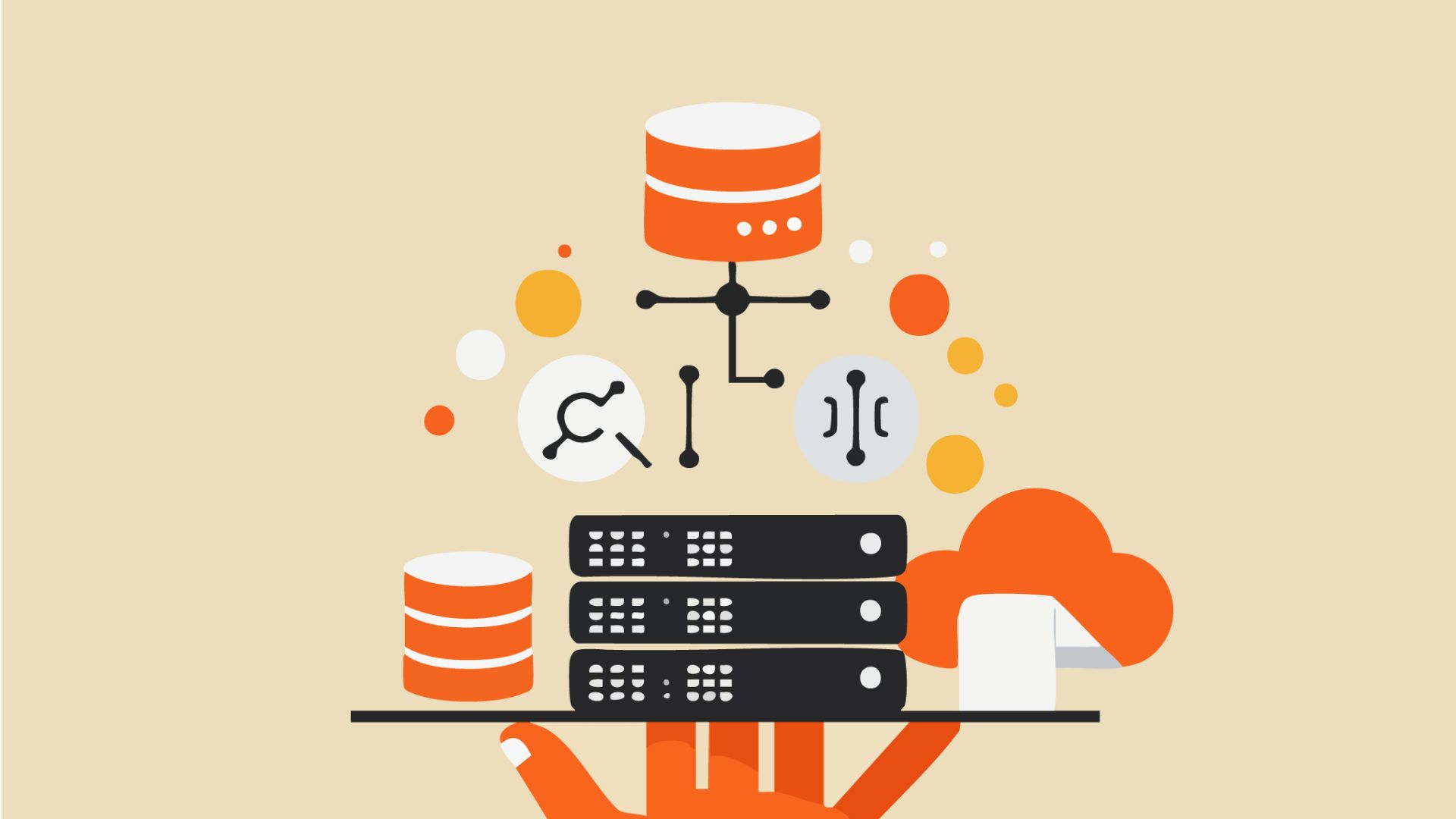Share this:
Posted in:
Business TransformationIf you’ve ever felt overwhelmed trying to understand IT infrastructure, you’re not alone. Most business owners or IT managers encounter questions like “What really makes up our IT environment?” or “Is our current IT infrastructure enough for future growth?”
The answer isn’t always straightforward, but understanding the different types of IT infrastructure is a great place to start.
In this guide, we’ll break it all down clearly: the key components of IT infrastructure, how they function, and the most common infrastructure types organizations use today. Whether you’re starting from scratch or refining your system, this explanation will help you navigate confident decisions.
What is IT Infrastructure?
Put simply, infrastructure refers to all the technology pieces—hardware and software components—that are the foundation for your business operations. These are the resources that keep your data flowing, your applications running, and your people productive.
IT infrastructure includes:
- Physical and virtual servers
- Network systems including cables, routers, and switches
- Storage systems for data
- Operating systems and core business software
- Security tools like firewalls, intrusion detection systems, and encryption
- Connectivity platforms such as WAN and LAN
- Access to services like cloud computing
Each of these infrastructure components works together to support critical tasks like communication, productivity, data storage, and customer interactions.
Why the Importance of IT Infrastructure Keeps Growing
The importance of infrastructure has never been higher. Organizations now rely on digital tools to deliver rapid customer service, make decisions using real-time data, and share resources securely over the Internet.
A secure IT infrastructure ensures:
- Always-on communication between components
- Protection from cyberattacks or data breaches
- Scalability to grow as your business evolves
- Connectivity across remote and in-office setups
Your IT setup should be more than just “working.” It should be adaptable, resilient, and precise—which is where infrastructure management comes in.
Traditional IT Infrastructure
Traditional infrastructure (also called on-premises infrastructure) refers to physical systems located within your company. Think on-site servers, routers, and your own data center.
Key features:
- All infrastructure components are owned and operated internally
- Offers full control over infrastructure security, configuration, and updates
- Often requires dedicated teams to maintain IT infrastructure
While offering strong security systems, this model doesn’t offer the scalability and flexibility that cloud-based systems provide. Expanding requires buying more hardware and software, space, and possibly hiring more IT staff.
Cloud IT Infrastructure
Cloud infrastructure moves your computing and data storage needs to the Internet, generally managed by providers like Amazon Web Services or Microsoft Azure.
Benefits:
- Enhanced scalability—you can scale up or down based on usage
- Lower entry cost since you’re not buying physical equipment
- Built-in performance optimization strategies and updates
Common cloud service models include:
- Infrastructure as a Service (IaaS): You rent computing resources like virtual machines, servers, and storage
- Platform as a Service (PaaS): Development environment provided so your teams can build custom software
- Software as a Service (SaaS): Ready-to-use apps delivered over the web (e.g., Google Workspace, Salesforce)
Each model meets different needs—from engineering to collaboration—and cloud-supported systems also integrate automation, help reduce downtime, and support real-time computing.
Hybrid Cloud Infrastructure
A hybrid cloud solution blends on-premises systems with cloud computing platforms. It gives you flexibility to move workloads between physical and virtual environments based on needs, costs, or compliance.
What makes hybrid work:
- Sensitive data stored locally for stricter control
- Less-critical workloads processed via cloud-based services
- Uses virtualization, load balancing, and cloud management tools to unify environments
Blending local and remote systems is often ideal for companies transitioning from traditional IT infrastructure or requiring regulatory compliance and data recovery plans.
Hyperconverged Infrastructure (HCI)
Hyperconverged infrastructure combines compute, storage, and network into one integrated system. Instead of managing separate silos for each infrastructure component, HCI virtualizes everything.
Pros of HCI:
- Centralized infrastructure management
- Improved infrastructure usage and resource allocation
- Streamlined maintenance, updates, and troubleshooting
It’s commonly used for data center efficiency, allows fast deployment, and supports virtual machines, communications protocols, and modern workloads tied to DevOps, machine learning, and artificial intelligence.
Network Infrastructure
Without a robust network infrastructure, none of your systems can communicate. It’s arguably the most foundational part of your IT setup.
Elements include:
- Physical links: cables, routers, network switches, and wireless access points
- Logical components: network management tools and security settings like authorization
- Protective gear: firewalls, intrusion detection systems, and encryption
Network infrastructure handles internet access, internal file sharing, and connectivity between locations using local area networks (LAN) or wide area networks (WAN).
Maintaining high network performance reduces latency, downtime, and enhances productivity, particularly in remote work environments.
Virtual Infrastructure
In virtualized computing, physical resources are abstracted into virtual layers for more flexibility and fewer hardware constraints.
How it works:
- Single machines run multiple virtual machines (VMs) with isolated operating systems
- Simulates computing, networking, and data storage environments
- Enables scalable staging, testing, and backup systems
Virtualization means less physical gear, greater scalability, and faster toggling between support services. It also empowers infrastructure as code practices that support modern IT infrastructure automation.
Cloud-Native and Serverless Infrastructure
Serverless infrastructure might sound like there are no servers, but that’s not quite true.
Instead, your infrastructure provider handles all server management, letting developers deploy code directly.
Key advantages:
- Developers only write and push code; the infrastructure adapts automatically
- Supports projects that require fast computing, low latency, and innovation agility
- Promotes cost savings by only billing for used resources
It’s useful in high-volume environments like e-commerce, Internet of Things, and real-time data analytics, and works well with enterprise resource planning and customer relationship management systems.
Key Components of IT Infrastructure
Every infrastructure—whether cloud or on-prem—relies on certain components required to operate. Let’s break down the key components of IT infrastructure.
Hardware and software components include:
- Servers and desktop computers
- Laptops and personal computers
- Routers, firewalls, and printers
- Cloud storage, databases, and backup setups
- Operating systems, application software, and virtualization layers
These systems form the backbone of any information technology infrastructure, ensuring fast communication, stable connectivity, and optimal productivity.
Examples of IT Infrastructure in Action
Here are some examples of IT infrastructure powering modern organizations:
Example 1: Retail Company
- Uses cloud infrastructure with IaaS for scalable inventory systems
- Protects payment systems using encryption and security protocols
- Connects stores via WAN and internal network devices
Example 2: Healthcare Provider
- Runs a secure data center on on-premises servers
- Implements intrusion detection systems and heavy infrastructure security
- Uses software as a service for patient records and appointment scheduling
Infrastructure Services & Management Considerations
Infrastructure services include cloud hosting, monitoring, managed services, performance tuning, and network optimization. They help ensure your infrastructure provides optimal support for end users.
Effective service management avoids:
- Downtime leading to a loss in efficiency
- Data privacy risks and data breaches
- Poor communication or misalignment between components like servers and storage
Choosing the Right Infrastructure for Your Business
To pick the right solution, ask yourself:
- Does our current IT infrastructure support scalability?
- Are we dealing with high infrastructure costs?
- Is our infrastructure secure, up-to-date, and aligned with team workloads?
- What does our infrastructure project plan call for in the short and long term?
Whether facing legacy system limitations or planning a new investment in virtualized computing, tailor decisions to meet your infrastructure requirements now and well into the future.
Final Thoughts: Ready to Evolve Your Infrastructure?
A comprehensive IT strategy begins with choosing the right type of IT infrastructure for your long-term vision. Whether you’re moving to the cloud, sticking with on-premises, or somewhere in between, the right setup can solve immediate pain points while preparing you for tomorrow.
Want to see how infrastructure choices can directly impact performance and growth? Check out our performance optimization strategies for actionable guidance.
Understanding and managing your infrastructure is not optional—it’s essential. With so many options available, now is the time to take a fresh look at your setup and seize the opportunities a well-designed infrastructure can deliver.



